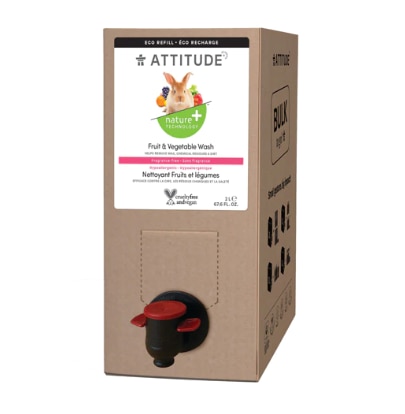A new Netflix documentary has left many people suddenly distraught over the risk of foodborne illness.
In “Poisoned: The Dirty Truth About Your Food,” filmmaker Stephanie Soechtig lifts the veil on the U.S. food industry to show how failures in the system lead to outbreaks of foodborne pathogens that cause cases of severe illness and deaths every year.
A Netflix summary of the documentary states that potential danger lurks in all kinds of foods at your local supermarket, including in “romaine, precut cantaloupe, that ‘safe-to-eat’ tub of cookie dough, Lucky Charms, some chicken breast.”
Each year, 48 million Americans develop a foodborne illness, according to the Centers for Disease Control and Prevention. Of those who get sick, 128,000 end up in the hospital and 3,000 die.
“These can be very dangerous and life-threatening infections,” says Mitzi Baum, CEO of Stop Foodborne Illness (STOP), a national public health nonprofit advocating for effective food safety policies.
How does foodborne illness damage your health?
Foodborne illness is the result of microorganisms — bacteria, viruses and parasites – entering your body through the foods you consume.
Left untreated, some of these microorganisms can infect your body’s internal organs and multiply. They can damage these organs and spread to your bloodstream.
Foodborne illness can also lead to other health problems, including:
- Meningitis
- Kidney damage
- Hemolytic uremic syndrome, which can cause kidney failure
- Arthritis
- Brain and nerve damage
The CDC notes that recovery from foodborne illness can take weeks or months. Some people never fully recover.
Which foods put you most at risk of foodborne illness?
As the Netflix documentary makes clear, many foods can put you at risk of foodborne illness. However, the CDC says fresh produce and poultry account for a large portion of foodborne illnesses.
According to CDC records, 46% of all foodborne illnesses are linked to forms of produce. Leafy vegetables are responsible for 22% of these cases, more than any other food.
Meanwhile, poultry is the source of 19% of foodborne illness deaths, which ranks first among all foods.
Dairy products also are a major source of foodborne illness, accounting for 14% of cases and 10% of deaths.
“Foods that aren’t cooked or don’t have a ‘kill step’ increase an individual’s risk for foodborne illness,” Baum says.
A “kill step” is an action — often in the food manufacturing process, but also sometimes performed at home by consumers — that removes dangerous pathogens from the food. Examples include:
- Cooking
- Pasteurization
- Use of chemicals
- Freezing
How to prevent foodborne illness when handling foods
It is virtually impossible to eliminate the risk of getting sick from the foods you eat. However, there are many steps you can take when handling and preparing foods that will significantly lower your risk of contracting a foodborne illness.
For example, if you plan to eat produce raw, it is important to thoroughly wash it first, Baum says.
“Cooking helps to reduce the risk of foodborne illness associated with produce,” she adds.
Studies have shown that poultry in the U.S. often contains harmful bacteria such as salmonella and campylobacter both in and on the meat.
“This is why it is so important to prevent cross-contamination,” Baum says. “After handling raw meats, do not touch foods that are consumed raw.”
It’s also crucial to avoid using the same utensils for both raw and cooked meat.
To reduce your risk of getting sick from dairy foods, only purchase dairy products that have been pasteurized. Also, store all dairy products — and other perishable foods — at 40 degrees Fahrenheit or colder.
How to prevent foodborne illness when cooking foods
In general, cooking foods to a safe internal temperature should help prevent foodborne illness. Use a temperature probe to check the internal temperature. The CDC says foods should be cooked to the following temperatures:
- 145 degrees Fahrenheit for whole cuts of beef, veal, lamb and pork, including fresh ham
- 145 degrees Fahrenheit for fish with fins
- 160 degrees Fahrenheit for ground meats, such as beef and pork
- 165 degrees Fahrenheit for all poultry, including ground chicken and turkey
- 165 degrees Fahrenheit for leftovers and casseroles
It is also important to store foods properly before you eat them and after you cook them.
“Keep cold foods cold and hot foods hot,” Baum says. “Leaving foods out for too long allows harmful bacteria to grow and can cause foodborne illness.”
So, do not leave cooked foods out for more than two hours, or one hour if the temperature is above 90 degrees Fahrenheit.
Cooking foods using a microwave poses unexpected and often overlooked dangers in terms of foodborne illness, Baum says.
“There are specific directions to cook in a microwave that must be followed,” she says.
Microwaves cook from the inside out and the heat is not evenly distributed.
“Foods must be stirred regularly and repositioned within the microwave to ensure thorough cooking,” Baum says. “This is much different than conventional ovens and stove tops.”
What to do if you become sick with foodborne illness?
In some cases, the germs associated with foodborne illness make you sick within hours. In other situations, you might not feel ill for a few days.
Foodborne illness is likely to trigger a number of symptoms, including:
- Diarrhea or bloody diarrhea
- Stomach cramping
- Vomiting
- Fever
“Your body’s immune system reacts with vomiting and diarrhea to try to get expel the infection or intoxication due to bacteria, viruses or parasites,” Baum says.
If you experience these symptoms, “staying hydrated is essential,” Baum says. If symptoms persist for more than 72 hours, you should seek medical care.
You should seek medical care more promptly if your symptoms are severe, including bloody diarrhea, a temperature over 102 degrees Fahrenheit, vomiting the prevents you from consuming liquids and signs of dehydration.
Women who are pregnant and have a fever and other flu-like symptoms also should seek prompt medical care.




